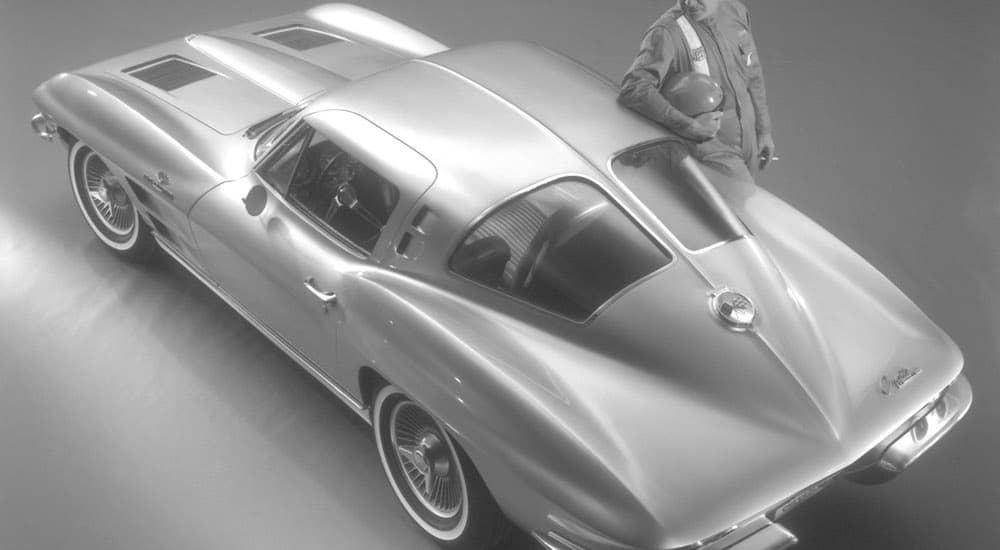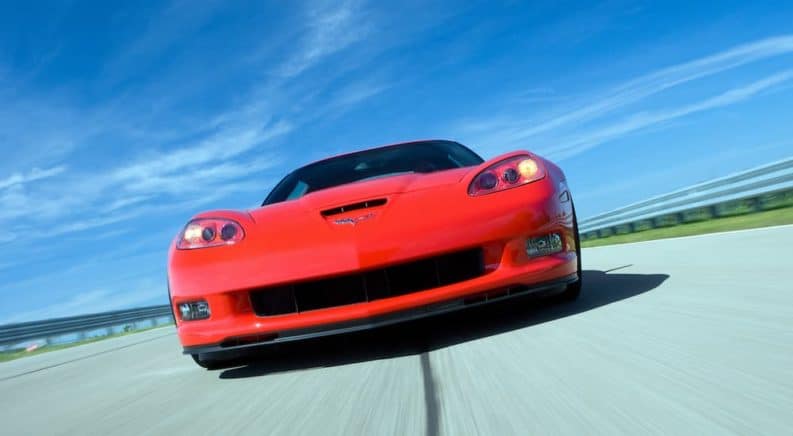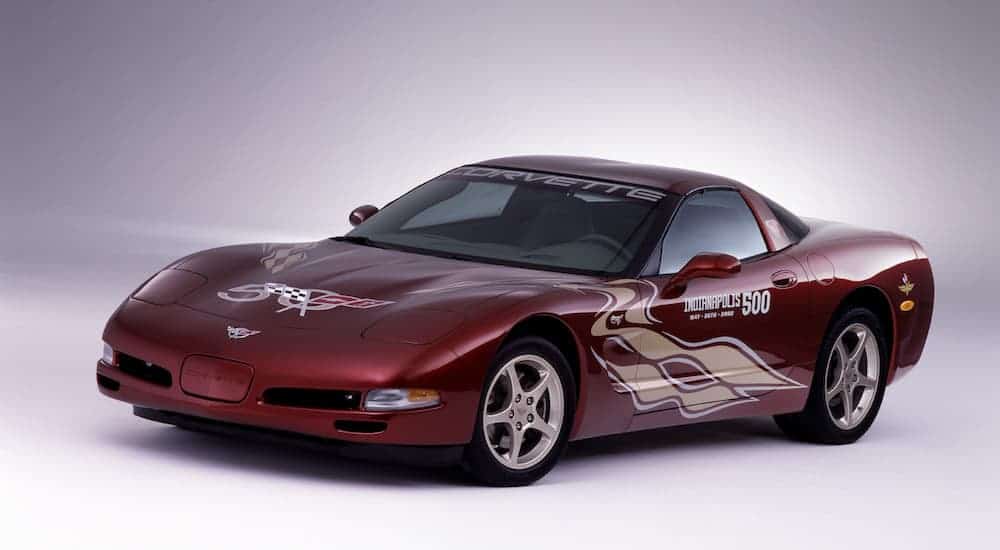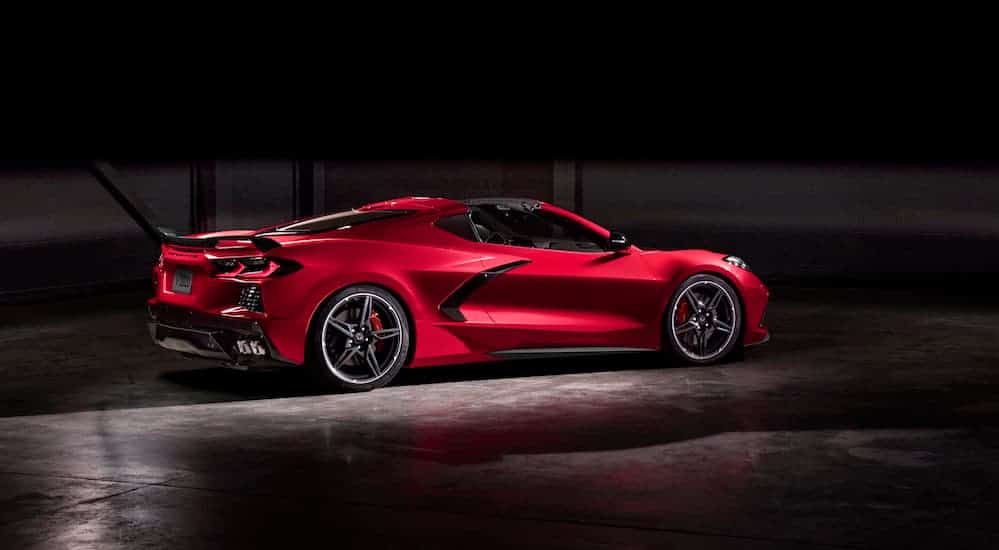The roar of the engine, the unique styling, and the in-your-face American attitude — there are a lot of great things about a classic car like the Corvette, and they all attribute to its lasting popularity. For a car to have been in production for over 60 years, there must be something truly special about it. And, in fact, there are more than just a few things we could talk about for why the Corvette has lasted as long as it has. For starters, if you’re looking for a used Chevrolet, whether you’re looking for a Corvette or not, just keep an eye out for them anyway. It will make the search a lot more exciting if you include this beloved vehicle in the running. And, believe me, it should always be in the running.
A Brief History

It’s hard not to notice a Corvette when you encounter one out in the wild, mainly because you either just heard its powerful engine or you saw it stand out next to a sea of SUVs and hatchbacks. Although, exaggeration aside, the Corvette really does stand out. It’s what the vehicle is known for — an aggressive, low-profile, sleek-designed beautiful piece of machinery with a monster of an engine.
It has definitely changed through the years, which we’ll get to in a bit, but one thing that hasn’t changed is the spirit of the machine. The Corvette was always meant to be a fun and sporty car, with the keyword being “sporty.” Never has the Corvette been part of the American muscle group of vehicles (like the Camaro or Mustang) — although it definitely has some muscle — it’s actually labeled as a “sports car.”
From day one, the Corvette has attracted attention, which is why, if you’re considering looking into getting one, you should obviously be comfortable with people staring, either in envy or awe, or even both. More importantly, though, you should enjoy the ride.
Changing Through the Years
For its first ten years, the Corvette was offered exclusively as a convertible. It wasn’t until 1963 that you could purchase a Corvette with a hardtop, which is a real testament to how much of a sports car this really was, at least in today’s mental imagining. Today, you think of a sports car, and you picture a sleek and fast (possibly Italian) convertible with your hair blowing in the wind. It’s not Italian, but it definitely got its beginnings right with being a convertible. Besides, the fact that it’s American is part of the huge reason it’s a classic.
To me, the classic Corvette styling I know didn’t really start until the 1960s, exactly the same time the hardtop version was introduced (1963). It’s here where the car stops looking so much like your 1950’s drive-in boat type of vehicle and starts to look a little sleeker. Fast forward to 1969, and now you can really see where today’s Corvette came from, with the hood that’s swooping down and the general wave-like design being prominently displayed. Moving through the 1970s and 1980s, the dipping nose is still seen quite clearly, but the overall wave has been decreased. You also start to see a lot more of the near 90-degree backside with four round tail lights that lasted into the 2000s and even this decade, the 2010s. Fun fact: the popular quad-tail light design started back in 1961.
Although originally seen as a car for sports car enthusiasts, the performance of the Corvette didn’t live up to expectations until 1955 (two years after its debut), when it was given a 4.3-liter V8, 195 hp engine. Before then, it had a six-cylinder engine. From there, the performance continued to increase, year after year. New designs and improvements meant more horsepower, which meant faster 0-60 speeds and an increase in sales. By 1960, the Corvette could produce over 300 horsepower and looked like a completely different machine than seven years prior.
With increasing regulations and requirements (safety standards), the Corvette’s power began to drop in the 1970s (after some variants hitting over 400 horsepower in the 1960s), even though it continued to prove a popular vehicle (including in the 1980s). By the time the 1990s came around, the Corvette was back in the full swing of things, hitting very fast 0-60 speeds (4.5 seconds in 1990). By 1991, the millionth Corvette was produced in Bowling Green, Kentucky, marking a day in history for this classic American car.
Throughout the process of its evolution, the Corvette has long been hailed as one of the best (if not the best) cars to ever come out of America. It has always competed against the performance cars of other top vehicle manufacturers but is quite often found to be much less expensive. Although performance cars aren’t generally affordable or viable, for the average person, having one that’s less expensive (than say a Porsche) can be a real treat for someone that yearns to own one of these delightful machines.
The Modern Corvette
I’m not sure what a car designer back in 1953 would have to say about the looks of the 2020 Corvette, but I feel like the consensus would be pretty similar no matter what year you’re coming from the new Corvette just looks awesome. It’s exactly what a kid today might imagine a sports car to look like. Flashy, in-your-face, and full of power. Yes, there’s a lot going on with the design, but to be fair, that’s kind of the direction modern car design seems to be going. “Let’s throw some grooves there on the side, a lot of lines on the hood, and can we please add as many jagged edges as possible?” I imagine that’s how whoever’s in charge gets things done when it comes to car design these days. Yet, I still like it.
In fact, I love it. For me, if a car is going to cost more than $50,000, then it should appear that it actually does. I’m sure all of the lines, grooves, and edges add some kind of aerodynamic fluidity to the whole package, but to me, it just looks like a very cool car. I wouldn’t want to shell out that much cash to find I’m buying something that resembles everything else you see on the road, which is basically every SUV out there (in that price range). It’s actually shocking you could be driving an extremely beautiful (and performance-heavy) 2020 Corvette or a rather strange upgraded 2019 BMW i3. Obviously not the same type of vehicle at all, but their price ranges are (for a standard 2020 Corvette and a very upgraded 2019 BMW i3) similar.
To put it bluntly, you don’t become a classic by just doing strange things. The Corvette is partly a classic because it’s the dream we all want — to be cruising down Route 66 in a flashy convertible with the sun at our back and the wind in our hair. Fortunately, it’s a dream that can easily become a reality since there have been so many of these classic cars made over the years. Now it’s just a matter of finding which decade and year suits you the best as you hunt for a classic Chevy.






